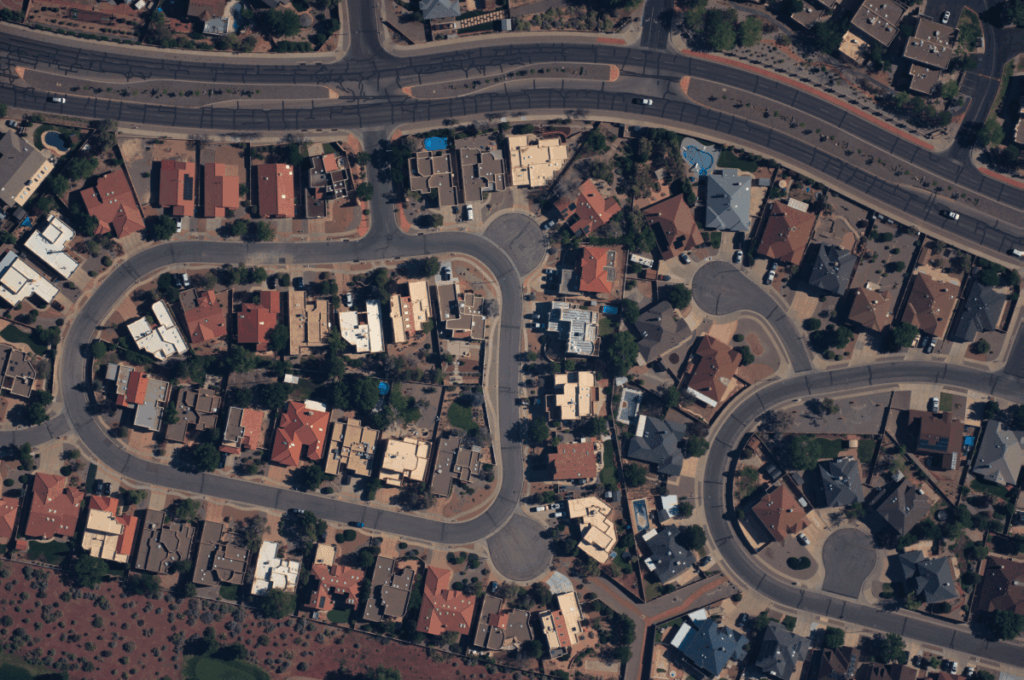When it comes to creating images of Earth from above, satellites, drones, planes, and spacecraft are what tend to come to mind. But a startup called Near Space Labs has a very different approach to taking high-resolution photos from up high.
Near Space Labs is building aircraft, called Swift, that are raised by helium balloons and then rely on air currents to stay up, move around to take pictures from the stratosphere, and eventually glide back down to earth. On the back of significant traction with customers using its images, the startup has now raised $20 million to expand its business.
Bold Capital Partners (a VC firm founded by Peter Diamandis of XPRIZE and Singularity University fame) is leading the Series B round. Strategic backer USAA (U.S. Automobile Association) is also investing alongside Climate Capital, Gaingels, RiverPark Ventures, and previous backers Crosslink Capital, Third Sphere, Draper Associates, and others that are not being named. Near Space Labs has now raised over $40 million, including a $13 million Series A in 2021.

The startup is the brainchild of Rema Matevosyan (CEO), Ignasi Lluch (CTO), and Albert Caubet (chief engineer) — all three of whom worked in space and physics technology and research prior to starting the company.
Matevosyan is Armenian, growing up in what she described as a “very technical” family of physicists, programmers, and amateur astronomers. After studying mathematics as an undergraduate in Yerevan, she moved to Moscow for graduate school, where, at the Skolkovo Institute, she first met Lluch, who had come to study there from Spain.
Both were drawn to what, at the time, was thought of as the MIT of Russia. Indeed, it was around 2017, and the institute then was in a joint venture with MIT to fill out that ambition.
It was through that relationship that the trio applied to an accelerator called Urban-X in New York. Matevosyan found living in the U.S. to her liking, and she now runs the company from there.
If Near Space is about floating high above Earth to get a better perspective on what is going on down below, there is a metaphor in that description for Near Space and its founders.
The partnership between Skolkovo Institute and MIT ended in February 2022, one of the by-products of the sanctions that the U.S. leveled on Russia in the wake of its invasion of Ukraine. Meanwhile, the Urban-X accelerator was shut down by its primary backer, BMW, this year.
Near Space is still here, though, and it’s growing.
Matevosyan said one of the startup’s biggest customer segments to date has been the insurance industry, which subscribes to Near Space’s imagery to track and understand the impact of large-scale disasters like fires and hurricanes. (USAA is a major insurer and financial services provider, alongside its other activities for motorists in the military, veterans, and their families.)
For now, Near Space covers only specific areas of the U.S., but it plans to scale up. Matevosyan said that can be done relatively easily, since the company requires no special licenses to fly — its Swift aircraft are only “powered” by balloons, need only wind currents, and can move about the stratosphere unmanned.
The startup aims to ultimately cover 80% of the U.S. population twice a year with its 7 cm imagery. Near Space claims it can do in hours what might take 800,000 drones days or weeks to execute.
The company will also be building more customized coverage plans for customers, which it says will be tailored to end users’ operations.
Today, those users are primarily in the area of insurance, but some of the funding will also be used to explore opportunities in other segments. Matevosyan cited agriculture as an area where the startup could have an opportunity.
A lot of farms, small and large, have tried to use drones to determine the state of their crops, but this was not scalable, she said, because it was not accurate enough. “Drones were taking small samplings and extrapolating, [but] that really didn’t take off, because if a chunk of land is not healthy, that doesn’t necessarily mean that the rest of the farm is unhealthy.” Using drones to survey everything proved too costly to execute, while satellites can’t provide decent enough resolution for the right cost to those would-be customers.
Military use is one area that seems like an obvious use case, but Near Space has yet to pursue that opportunity. Matevosyan describes the Swift as “dual use,” and it could include a limited amount of payload. But she said the company has yet to pursue anything outside of commercial use cases.
Given the direction the world is moving and the geopolitical climate, it will be interesting to see if that remains the case for a technology that seems supremely versatile and relatively cheap.
Still, that versatility is one reason why investors are so interested.
“The idea of low-cost aerial imagery is valuable for many parties, not just insurance,” said Will Borthwick, the principal at Bold who led on this investment. “Even when you think about the advent of AI, which requires timely and high-quality data to work properly, it’s the moment in time for something like this.”


